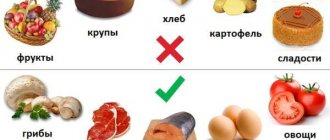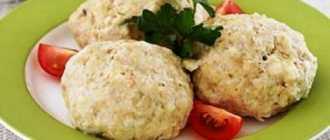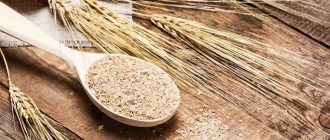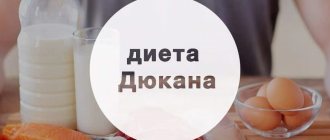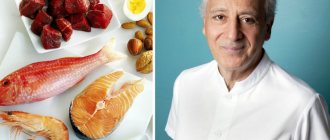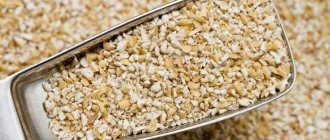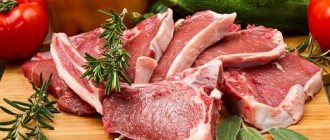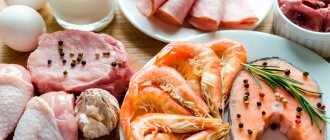Diet is a well-known concept that 90% of the population associates with certain dietary restrictions for a specific period of time in order to normalize weight. However, this concept has a broader meaning and literally translated from Greek means “diet mode.” Simply put, it is the lifestyle, eating habits and dietary pattern that a person or a nation follows throughout life.
In addition to the general concept, there are various types of nutrition, such as rational, therapeutic diets, vegetarianism, veganism, raw food diet, halal, kosher and other types, in which certain foods are limited or excluded from the diet.
How safe are the diets?
Of course, food preferences and the choice of a certain type of nutrition affect human health. As for temporary diets, which involve switching to a promoted diet, they also have an impact on health, and sometimes not the best. Dramatic weight loss immediately after childbirth is especially dangerous. It would seem that these are temporary restrictions, why are they dangerous for the body?
Stress for the body
A new diet, digestive and metabolic disorders, and the destruction of adipose tissue are real stress for the body, which is trying to adapt to new living conditions, devoting all its strength to maintaining vital functions. Particularly harmful in this case are methods that involve a sharp rather than gradual rejection of certain products. In another case, “decisive” ladies drive themselves into a stressful state, who from tomorrow eat an apple and water, but even today pamper themselves with kebab and pita bread.
Intolerance by the body
This is the main drawback of most diets. Rarely do people losing weight think about possible contraindications to the chosen method of losing weight, relying on the opinions of friends and acquaintances whom she helped and the weight loss process itself was easy. Deterioration in well-being and appearance is nothing more than dysfunction of the digestive, urinary and other systems of the body, while in diet sources all these negative phenomena are called “restructuring of the body,” “reaction to the destruction of adipose tissue,” etc.
Lack of vital substances in the body
For some time, substances necessary for life, but no longer supplied with food or supplied in small quantities, will be taken from the depot in the body. However, this period is short-lived, and vitamin-mineral or nutrient deficiency will affect both metabolism and the functioning of internal organs, not to mention appearance.
Depression
The psychological side is one of the main ones when following a limited diet. Primary euphoria and faith in the result after 3-5 days of following the diet are replaced by depressed mood, apathy and can result in a nervous breakdown.
Loss of muscle mass
One of the negative effects, but very likely with low-calorie diets, since not only adipose tissue decreases, but also muscle tissue, which negatively affects both health and appearance.
Dehydration
This phenomenon is typical for salt-free diets, since the complete exclusion of salt from the diet leads to loss of fluid from tissues, subsequent accumulation of toxic metabolic products and disruption of all biochemical processes in the body.
Decreased immunity
Unbalanced nutrition, stress and slow metabolic processes reduce the body's resistance to infections.
Intoxication of the body
Accelerated breakdown of adipose tissue leads to the formation of toxic metabolic products. At the same time, nutrient deficiency leads to a protective slowdown of all metabolic processes, including the detoxification function of the liver. Metabolic products accumulate in the body and poison it.
Change in appearance
It would seem that this is the result of all diets, and this is what they strive for. But the change in appearance may not be at all what was expected. Sagging, flabby and dull skin, an aged face, brittle hair and nails, out-of-shape breasts and buttocks, sunken eyes - this is not a complete list of all the changes that occur in the process of losing weight.
A sharp increase in the risk of any diseases and activation of dormant pathologies
An organism weakened by diets is an ideal environment for the development of any infectious process, including activation of its own opportunistic microflora, as well as exacerbation of chronic pathologies. With a high degree of probability, after some time, diseases of the body system that has undergone the greatest change during the diet will manifest. Also, against the background of impaired metabolism and hormonal levels, the risk of cancer increases.
In addition to health problems, most people experience emotional dependence on the diet after stopping it. The fear of gaining extra pounds is intensified by the sacrifices that had to be made while losing weight. All this leads to the body’s rejection of “forbidden” foods, the development of depression and extreme conditions such as anorexia or bulimia.
Pros and cons of the diet
Like any limited nutrition system, the Dukan diet has both positive and negative sides.
Pros:
- Quite fast weight loss;
- There is no need to count calories and think through your menu in detail by weight;
- Protein foods provide long-lasting satiety, which is very convenient for people who usually have very little time to eat on weekdays;
- A very large list of permitted products, which allows you to diversify your diet and not suffer from a shortage of certain dishes;
- Eating a considerable amount of protein foods promotes body elasticity, which almost eliminates the appearance of stretch marks and sagging skin if you lose a large number of kilograms;
- Sweeteners are allowed, which can sweeten the diet in every sense;
- The way out of the diet is carefully thought out and in most cases, if carefully followed, it helps not to gain weight.
Minuses:
- The Dukan diet is not balanced, as many vitamins and minerals are lacking in the diet, which can affect health;
- Another negative point is the large amount of protein, which can affect the functioning of primarily the human urinary system, as well as the cardiovascular and digestive systems;
- At the first stage of the diet, side effects are possible in the form of headaches and dizziness;
- Due to the low fat content, hormonal imbalances are possible;
- Large amounts of protein can cause bad breath.
- The products that need to be consumed on the Dukan diet are not cheap, so following it is quite expensive.
The Dukan protein diet is the essence of a weight loss technique
The author of the technique is the French doctor Pierre Dukan. Since its inception, the Dukan method has become extremely widespread due to the fact that strict dietary restrictions are excluded. “Eat as much as you want,” says P. Dukan.
The doctor dedicated 19 books to his innovative method of losing weight. The scientist himself has been following the diet for more than 40 years and, as he himself claims, does not experience any health problems. According to the author, the method allows you to lose excess weight, consolidate and stabilize the results obtained without strict fasting and unbearable workouts.
The Dukan diet refers to low-carbohydrate, protein diets:
- There are practically no restrictions on the amount of food consumed from the permitted category;
- There is a clear list of prohibited and permitted products;
- The basis of nutrition is protein foods;
- Carbohydrates are significantly limited and fats are practically eliminated;
- The amount of salt, which retains water in the body, is minimized;
- Alcohol is completely excluded. At the last stage, the use of white wine for cooking is allowed;
- A mandatory nutritional element is oat bran, which replaces one of the meals during the day. Bran dulls hunger, normalizes digestion and removes metabolic products;
- It is important to drink enough water, 2 liters per day, to reduce hunger and effectively remove waste products. You can drink at any time;
- It is strictly forbidden to skip breakfast;
- It is necessary to lead an active lifestyle to prevent kidney problems.
Why can you lose weight without the risk of gaining weight again by eating protein foods?
- The digestion of proteins is accompanied by a greater loss of calories than is spent on the metabolism of fats and carbohydrates;
- Protein in its pure form significantly reduces the feeling of hunger and does not retain water in the body;
- Protein foods increase the body's resistance to infections;
- Protein does not allow muscles to “lose weight”, maintaining them in tone, and therefore eliminates sagging skin.
Stages, menu
The Dukan method consists of 4 alternating stages. The first two stages allow you to lose weight, and the last two help you consolidate and stabilize the achieved result. Each stage has a specific name and a list of foods that can be eaten. The most important thing for those losing weight is that you don’t need to count calories, eating as much as you want from the list of allowed ones. To achieve results, you cannot follow a diet halfway, achieving weight loss, but not securing the result.
Second phase and health risks
Low-carbohydrate, high-protein diets are often used for weight loss. But if you look from the point of view of the acid-base balance, then the negative effects of the diet are easily detected. The study involved ten people who switched to a protein diet for just two weeks (as with Attack) and followed a protein-carbohydrate menu for four weeks (as with Cruise).
There was a decrease in urine pH and an increase in secreted acids and citrate. The level of calcium in the urine increased significantly with a simultaneous decrease in osteocalcin in the blood serum. Doctors' findings indicate that the acid load on the kidneys has increased markedly, which has increased the risk of stone formation. The calculated calcium balance has worsened, and the chance of bone loss has increased.
Dukan is advised to follow the “Cruise” diet until the desired result is achieved. A person who is 10 kg overweight will have to hold on for up to 2.5 months , which is more than six weeks, which is enough for health to deteriorate.
Dukan diet: first phase “Attack”
The shortest and most significant stage in terms of weight loss. You are allowed to eat only protein foods. On average, attack days are observed for 5 days, ranging from 2 to 10 days, and depend on excess body weight. You can calculate the weight using a simple formula: M = P - 100, where M is the mass in kilos; P - height in cm.
| Number of kilograms above normal | Duration of Attack (days) | Weight loss during Attack days (kilograms) |
| ≤ 5 kg | 1 | ≈ 1 |
| ≤ 10 kg | 3 | 1 – 2,5 |
| 11 – 19 kg | 5 | from 3 |
| ≥ 20 kg | 7-10 | from 5 |
- Meals should be regular.
- You can eat as much as you want.
- At this stage, strong physical activity is prohibited; a 20-minute walk a day is enough.
List of foods that can be eaten in any quantity, combination and at any time of day: | List of prohibited products: |
|
|
Cooking methods: | |
|
A little history
Perhaps this is the most uninteresting and boring part of any article, but still I will try to make it brief and accessible.
It all started when in 1975, Dr. Pierre Dukan, who at that time had a therapeutic and neurological practice in Paris, encountered the first case of obesity. It happened completely unexpectedly. One of his regular patients, whom the doctor was treating for asthma, told Dukan at his next appointment: “Doctor, I have always been pleased with your help, but today I want you to help me lose weight!”
The patient told the doctor that he was ready to make any sacrifice, to give up any food except meat. To which the doctor, after thinking, told him: “Okay, eat meat for 5 days and come to me for a follow-up appointment. The main thing is to avoid fatty varieties when choosing meat.
The results were not long in coming: after 5 days the patient lost almost 5 kg of weight and at the same time felt much more energetic than before. They continued to work in the same direction and after 20 days the patient lost 10 kg, which could not but please both of them. And from that very moment, Dukan’s thorny path as a nutritionist began. For about 25 years he developed his own method, which could help many people in the fight against excess weight. He published several books during this period, but the most important brainchild of his career was the book “I Can’t Lose Weight,” published in 2000.
Second stage “Alternation”
At this stage, most of the weight loss occurs. It will not be as sharp as during attack days - about 1 kg per week. The duration of this stage depends on the number on the scale you need to lose weight to. Those. When you reach the desired weight, you should move on to the next stage.
- Protein days alternate with protein-vegetable days. This means that on protein days you can eat the same as in the first stage, and on protein-vegetable days, cooked or raw vegetables are added to the protein, but the basis of the diet is still proteins.
- The alternation scheme is selected individually. For example, 5 in 5 days, or 1 in 1.
- Vegetables cannot be seasoned with oil, but you can use 0% yogurt, balsamic vinegar, and garlic.
- Methods of preparing vegetables: grilling, steaming, boiling, stewing, baking in the oven.
- Be sure to consume 2 tablespoons of oat bran daily.
- You need to drink at least 1.5-2 liters of fluid per day.
- For physical activity, it is recommended to walk for at least half an hour a day.
Allowed vegetables: | Prohibited vegetables: |
|
|
Features of the stage: | |
|
Menu for the week (examples)
In this section you will be presented with an approximate weekly menu, divided into stages. But it is worth noting that this menu is based exclusively on simple dishes that do not require long preparation. In reality, there are a huge number of recipes that will brighten up your days and months spent on this diet.
And remember that the Dukan diet does not limit you in the number of foods you eat and does not force you to count calories. The main rule is to eat only foods from the list
Menu for attack
Don’t forget that you must be at this stage for exactly as many days as the official website’s calculator has calculated for you! Do not increase this stage on your own initiative.
Monday
Breakfast
- Two egg scrambled eggs
- Low-fat cottage cheese with bran
Dinner
- Boiled turkey fillet
- Low-fat yogurt
Snack
- Crab sticks
Dinner
- Fish baked in the oven
Tuesday
Breakfast
- Skim milk omelette with crab sticks
Dinner
- Steamed lean beef meatballs
Snack
- Bran with low-fat yogurt
Dinner
- Chicken skewers on skewers
Wednesday
Breakfast
- Tuna omelette
- Bran
Dinner
- Perch fillet baked with herbs
Snack
- Low-fat kefir
Dinner
- Steamed chicken cutlets
Thursday
Breakfast
- 2 boiled eggs
- Ham
Dinner
- Salmon soup
Snack
- Low-fat yoghurt with bran
Dinner
- Squid stuffed with egg
Friday
Breakfast
- Omelette with Tofu cheese
- Bran with low-fat cottage cheese
Dinner
- Steamed cod
Snack
- Any seafood
Dinner
- Chicken meatballs
Saturday
Breakfast
- Low-fat cottage cheese with bran
- Ham
Dinner
- Chicken fillet fried without oil
Snack
- Seafood
Dinner
- Eggs stuffed with tuna
Sunday
Breakfast
- Cottage cheese casserole
Dinner
- Beef stew
Snack
- Bran with low-fat yogurt
Dinner
- Salmon steak
Menu for Alternation
This stage is characterized by alternating days of pure protein (PP) with protein-vegetable days (PV). Therefore, protein and vegetable days are shown as an example menu. The menu for purely protein days can be taken from the menu for the Attack stage.
Monday (BO day)
Breakfast
- Omelette with tomatoes
- Bran with low-fat yogurt
Dinner
- Vegetable salad dressed with a few drops of olive oil
- Steamed turkey fillet
Snack
- Kefir
Dinner
- Fish baked with eggplant
Tuesday (BW day)
See Attack menu
Wednesday (BO day)
Breakfast
- Scrambled eggs with champignons
- Bran
Dinner
- Kefir soup with cucumber and herbs
Snack
- Raw almonds - 25 grams
Dinner
- Chicken julienne
Thursday (BW day)
See Attack menu
Friday (BO day)
Breakfast
- Vegetable stew
- Bran
Dinner
- Fish cutlets
- Cabbage and carrot salad
Snack
- Omelette with greens
Dinner
- Squid stuffed with mushrooms and egg
Saturday (BW day)
See Attack menu
Sunday (BO day)
Breakfast
- Low-fat cottage cheese with bran
- Boiled egg
Dinner
- Tomato puree soup
Snack
- Ham
- Cherry tomatoes
Dinner
- Turkey chops
- Champignons fried without malsa
Menu for Pinning
Monday
Breakfast
- Omelette with bell pepper
- Bran
- Soft curd with sweetener
Dinner
- Carp soup
- Fresh cabbage salad
- Beef cutlets
Snack
- Sandwich made from whole grain bread with ham and cheese
- 1 apple
Dinner
- Boiled turkey
- Vegetable stew
Tuesday
Breakfast
- 2 boiled eggs
- A cheese sandwich
- Cherry tomatoes
Dinner
- Baked chicken wings
- Fried eggplant
- Kefir
Snack
- Walnuts - 20 grams
- 2 apricots
- Bran
Dinner
- Chicken fillet baked with cheese
- Broccoli puree
Wednesday
Breakfast
- Omelet with cheese
- Bran with soft curd and almonds
- Fresh cucumber
Dinner
- Steamed fish
- Jacket potatoes
- Vegetable salad
Snack
- 1 pear
- Drinking yoghurt
Dinner
- Pork stew
- Stewed champignons
Thursday (protein day)
Breakfast
- Omelet with ham
- Bran
Dinner
- Boiled fish
Snack
- Seafood
Dinner
- Baked chicken fillet
Friday
Breakfast
- Cottage cheese casserole
- Bran
- Sandwich made from whole grain bread with ham and cheese
Dinner
- Fish cutlets
- Vegetable stew
- Cabbage salad
Snack
- 2 apricots
- Almonds 20 grams
Dinner
- PIR - any products
Saturday
Breakfast
- Scrambled eggs with tomato
- Sandwich made from whole grain bread with ham and cheese
- 1 apple
Dinner
- Fish soup
- Boiled chicken
Snack
- Bran with yogurt
- Walnut – 20 grams
Dinner
- Cauliflower puree
- Beef cutlets
Sunday
Breakfast
- Omelet with herbs and cheese
- Whole grain bread sandwich with ham
Dinner
- Stewed liver
- Fresh cabbage and tomato salad
Snack
- Yogurt with bran
- 1 pear
Dinner
- Salmon steak
- Broccoli puree
Menu for Stabilization
This stage of the Dukan diet, as you already know, is lifelong, with certain requirements being met. The doctor recommends sticking to proper nutrition and not neglecting his advice. In general, the menu at this stage can be absolutely anything, the main thing is to make one day a week protein (for example, Thursday). For this day, you can choose any option from Attack
The third stage of the diet is the “Consolidation” phase
At this stage, weight is no longer lost, but the body is accustomed to a new diet to stabilize weight. The most difficult stage from a psychological point of view, associated with the presence of a number of dietary restrictions. The duration is calculated according to the following scheme - 10 days for each kilo lost:
| Lost kilos, kg | Stage duration, days |
| 5 | 50-60 |
| 10 | 100 |
| 20 | 200 |
- The menu is expanding with new, tasty products, but strict rules for their consumption are established;
- The stage is divided into 2 equal halves;
- 6 days a week you should eat protein-vegetable foods (as on the protein-vegetable days of the “Alternation” stage);
- 1 day a week (Thursday) should be purely protein (like the days of the “Attack” stage);
- Every day you should consume 2 tbsp. oat bran;
- You should drink at least 1.5-2 liters of fluid per day;
- Physical activity – walking about 25 minutes a day.
In the first half of the stage, in addition to vegetables, you can add the following products: | Explanations on new products: |
|
|
In the second half of the stage, the following are additionally allowed: | |
|
Where to start a diet
The very first and most important thing to do before starting a diet is to calculate your correct weight on the official Dukan website, and also get a personal program with the duration of all stages.
Correct weight calculator
IMPORTANT!
- Do not neglect the recommendations that you receive by email. If the program calculates your correct weight of 55, then this is your correct weight and you do not need to strive for the fictitious 45 kilograms.
- Strictly follow the line recommended to you. If the program has calculated 3 days for you for the first stage, under no circumstances extend it on your own initiative.
The diet is prohibited for people under 18 years of age, however, according to the latest data, Dukan allowed the diet for girls from 17 years of age, and boys only from 18 years of age.
The book is the main keeper of secrets
No matter how hard all kinds of websites and blogs try (including us) to convey the brief essence of Dr. Dukan’s diet, unfortunately, it is 100% impossible to do this. Naturally, I will definitely tell you the main nuances, rules and principles of nutrition, and I will even try to do this in as much detail as possible, but... A book written by the author of this diet is a book. And reading it really helps to change your idea of nutrition and will help you systematize your lifestyle. Therefore, if you really love this diet and, let’s say, become close to it, then I would recommend reading the book “I Can’t Lose Weight” over time.
Medical question
The Dukan diet, like many other diets, can be expected to be stressful for your body. Especially if this organism liked to eat a couple of sandwiches with butter for breakfast, and treat itself to dessert in the form of strawberries with whipped cream for dinner.
The Dukan diet is quite long-lasting, so before starting it is recommended to undergo basic examinations, such as:
- Ultrasound of the abdominal organs (at least ultrasound of the kidneys and liver);
- Ultrasound of the heart;
- General blood and urine tests;
- Blood chemistry.
This technique involves consuming large amounts of protein foods, which will definitely put a strong strain on the functioning of internal organs. Therefore, if you know that you have pathologies in your liver, heart, or especially in your kidneys, this diet will be contraindicated for you. In this case, it is better to try a special diet for liver disease.
In general, ideally, before starting the Dukan diet (and, in principle, before any diet), you should consult with your doctor. Briefly describe the essence of the diet and the principle of nutrition on it, so that the doctor can give you all the necessary recommendations.
Oat bran
If you decide to follow this nutrition system, then this is perhaps the only product that will become your companion for life. Oat bran fiber helps cleanse the intestines, lower cholesterol levels, and can also regulate blood glucose levels, which is a very beneficial property for patients with diabetes.
It is important not to confuse oat bran with Hercules flakes.
The amount of oat bran depending on the stage of the diet:
- Attack - 1.5 tablespoons per day;
- Alternating - 2 tablespoons per day;
- Consolidation - 2.5 tablespoons per day;
- Stabilization - 3 tablespoons per day.
Vegetable oils
Although the Dukan diet has become famous for its low-fat method of losing weight, vegetable oils still have a small place in the list of acceptable foods. It is advisable to choose unrefined oil (olive, sunflower, etc.), since the content of healthy Omega-3 fatty acids is higher than in their unrefined brothers. In addition to fatty acids, oils contain vitamin E, which is an antioxidant essential for human health. You can describe the beneficial properties of oils for a long time and at length, but our task now is to figure out how much oil is allowed to be consumed on the Dukan diet:
- Attack stage - up to 1 teaspoon;
- Stage Alternation - up to 1 tablespoon;
- Fixing stage - 1 tablespoon.
As a rule, this amount of oil is used for dressing salads. For frying, it is recommended to take no more than 1-2 drops of vegetable oil.
Basic cuts on the Dukan diet
Very often in recipes from the Internet and in articles you will find abbreviations that are widely used by Dukanites. To make it easier to navigate Du Terminology, below is a list of basic and frequently used abbreviations:
- BW - purely protein days (Alternation stage);
- BO - protein-vegetable days (Alternation stage);
- DOP - acceptable product;
- SOM—skimmed milk powder;
- CC - corn starch;
- Sakhzam is a sweetener;
Products that will help brighten up your diet
This diet has some advantage over many others: the ability to cook all kinds of “goodies” without compromising the weight loss process. The so-called ADOPs can help us with this, that is, additional products and ingredients that help prepare all kinds of pastries, desserts and much more. DOPs are allowed to be consumed strictly from the Alternation stage, in the amount of 2 servings per day. In addition to DOPs, there are also some, at first glance, exotic and unusual to our eyes and ears products, the consumption of which is not as strictly limited as DOPs, but is still recommended to be consumed in moderation.
List of additional products (ADOPs) allowed from the Alternation stage:
- Corn starch - 1 tbsp. spoon or 20 grams;
- Skimmed milk powder - 2-3 tablespoons or 30 grams;
- Cheese (up to 7% fat) - 30 grams;
- Poultry sausages (up to 10%) - 100 grams;
- White table wine - 3 tablespoons or 30 grams - only for cooking;
- Coconut milk (up to 15% fat) - 100 grams;
It is important to remember that you can consume no more than two DOPs per day, including in ready-made dishes. For example: 30 grams of skimmed milk powder. Or 10 grams of cornstarch and 50 grams of coconut milk.
Other foods allowed on the Dukan Diet:
- Goji berries - 1 tbsp on BW days, 2 tbsp on BW days;
- Shirataki noodles;
- Soy protein isolate;
- Wheat gluten;
- Low-fat cocoa;
- Psyllium;
- Egg powder;
- Gelatin - up to 30 grams per day;
- Apple pectin;
- Agar-agar;
- Sweetener (liquid or tablets);
- Sugar-free syrups - up to 20 ml.
- Chia seeds - 1 tbsp.
The fourth stage – “Stabilization”
At this stage, the final stabilization of weight occurs due to the formation of protective mechanisms that will have to be observed throughout life! The diet is positioned by its creator as proper, healthy nutrition, therefore at this stage it is no longer considered as a measure to maintain a slim figure, but as a healthy lifestyle.
- The basis of nutrition is the rules given at the “Consolidation” stage.
- The main diet will be vegetables and proteins.
- 1 exclusively protein day is also left (Thursday).
- You should consume 3 tbsp daily. oat bran.
- We must not forget about maintaining a drinking regime - 1.5 liters per day.
- It is necessary to take daily walks, 20 minutes a day.
Changes in the menu regarding protein day:
- The consumption of red fish is limited: no more than 150 grams of smoked fish and no more than 200 grams of raw fish. The quantity of white fish and seafood is not limited;
- When eating chicken, wings, thighs and tailbone are prohibited. These restrictions do not apply to turkey meat;
- Among dairy products with 0% fat content, preference should be given to those that contain less lactose;
- Salt consumption on this day is reduced to a minimum.
The above rules should be strictly followed, without giving yourself any slack, otherwise a breakdown will occur and the body will begin to regain its previous weight!
Vegetarianism and diet
Is it possible to be a vegetarian and follow a diet? It's possible, but difficult. This direction has many different branches - from hard ones, in which it is allowed to eat only those fruits of plants that do not violate the integrity of the plant, that is, leaving the stems and roots intact (for example, carrots or onions in this case are forbidden), to lighter ones, in which dairy products and eggs are acceptable. There is pescatarianism, which many mistakenly classify as vegetarianism. Pescetarianism is simply the avoidance of meat and poultry, while maintaining fish and all animal products such as milk (and all dairy products) and eggs in your diet.
Only depending on which of the many types of vegetarianism you practice will it be clear whether your diet is compatible with this diet.
- If you simply do not eat meat and poultry, but eat fish, eggs and all fermented milk products , then the diet is quite acceptable for you. You can follow all four stages of the diet completely safely.
- If your diet excludes fish, but includes dairy products and eggs , then following the diet will be much more difficult, since your only source of protein is dairy products (low-fat) and eggs. This makes it difficult to spend purely protein days.
- If vegetarianism is based exclusively on plant foods , then following the diet is not recommended, since it will be very difficult to combine and combine only plant proteins on this diet.
Some Dukan recipes
There are many simple and accessible recipes that involve the use of approved products. However, all of them are relevant already at the last, lifelong stage. In the first stages, it is recommended to choose simple combinations of products and dietary cooking methods without spices (steaming, boiling), which contributes to better digestibility of food and its faster digestion.
Homemade sausage
- 1 kg of homemade minced chicken breast and turkey thighs without skin;
- 1 clove of garlic;
- black pepper;
- a little salt;
- 1 glass of skim milk.
Mix the ingredients well and let stand in the refrigerator for a couple of hours. Fill the natural or artificial casing with minced meat and form into sausages. Cooking method: steamed, grilled. The shell must not be used!
Pizza
Dough: 1 pumpkin of cauliflower on a fine grater, 1 tbsp. oat bran, 2 egg whites, spices. Filling: mozzarella cheese 7%, cherry tomatoes, slices of boiled beef. Knead the dough, place it in a mold on parchment, place thin pieces of beef, tomatoes and mozzarella slices on top. Bake at 180 C for 20 minutes.
Cookie
- 2 tbsp. l. oat bran;
- 1 tbsp. corn starch;
- 2 tbsp. skim milk;
- 2 egg whites;
- 3 tbsp. low-fat cottage cheese;
- sweetener.
Knead the dough and form cookies, place them on parchment and bake at 180 C for 20 minutes.
"Olivie"
- boiled chicken breast - 1 pc.;
- pickled gherkins - 4 pcs.;
- boiled green beans;
- half boiled carrots;
- 2 boiled eggs (or whites);
- sauce: soft low-fat cottage cheese 2 tbsp, lemon juice 1 tbsp, salt and pepper.
Grind all ingredients as for a classic Olivier salad, season with sauce.
Snack sea cocktail
- boiled squid – 2 carcasses;
- crab sticks – 8 pieces;
- 2 eggs, soft-boiled.
Cut the squid and sticks into slices, season with grated eggs. If desired, you can add a little salt.
Beverages
- For constipation, cabbage juice is recommended. A small head of cabbage or half a medium one is cut into pieces and passed through a juicer, consumed fresh, and can be stored in the refrigerator for no more than a day.
- Smoothie juice - 6 handfuls of spinach, 2 stalks of celery, 5 handfuls of lettuce, 2 peeled apples, cut into pieces, and 1.5-2 tbsp. water, immerse in a blender - a healthy smoothie is ready.
- Raspberry tea - pour a glass of boiling water into 1 teaspoon of crushed raspberry leaves, wait 20 minutes, strain, then add pureed fresh or frozen raspberries.
- Water with lemon, mint or cucumber - to make the water tastier, you can add 2 slices of cucumber or a few mint leaves or a slice of lemon to a glass of water.
The Pierre Dukan diet involves a special menu, which is recommended to be compiled in the form of a table for ease of adherence to the diet.
Contraindications to the Dukan diet
- Age less than 18 years;
Pregnancy planning;- Pregnancy and lactation;
- Menopause;
- Chronic diseases of the stomach and intestines;
- Cardiovascular diseases, hypertension;
- Any kidney disease;
- Gout;
- Oncopathology and precancerous diseases;
- Protein metabolism disorders.

